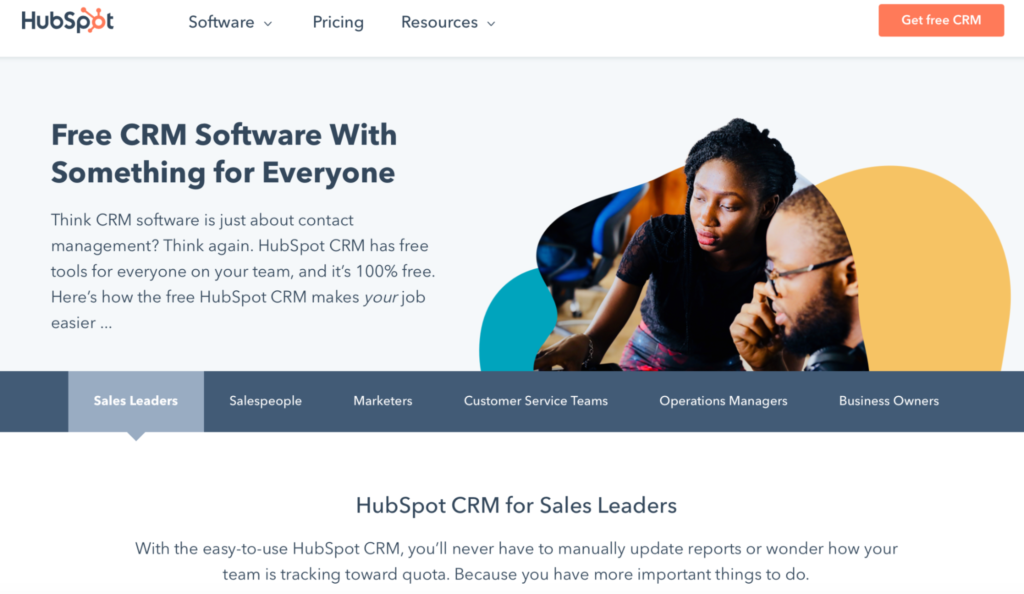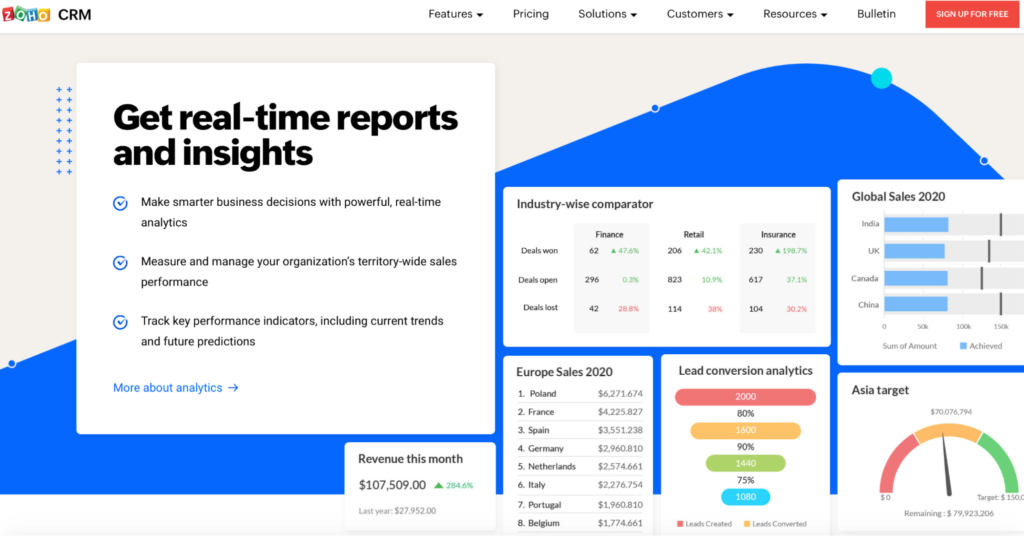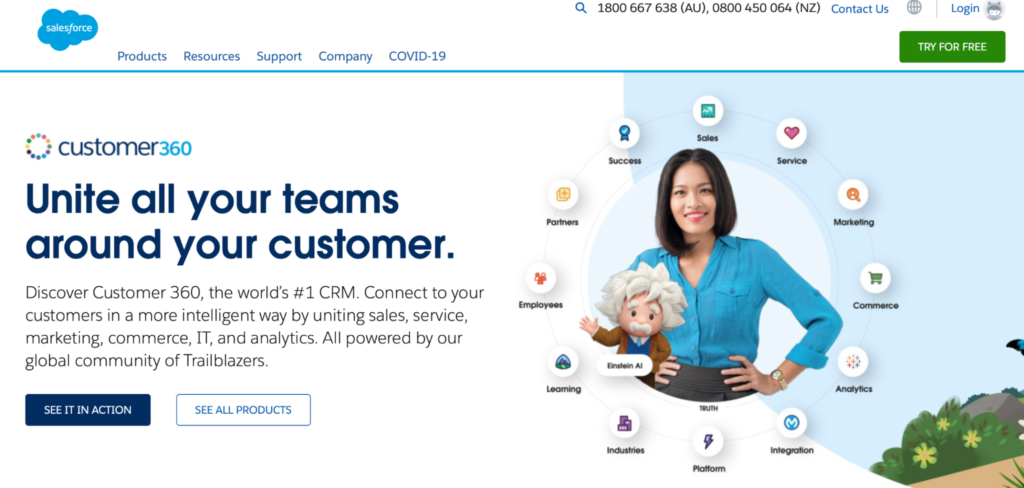In today’s fast-paced world, it’s more important than ever for organizations to be able to quickly identify issues, adapt to customer needs, and respond to consistently changing market demands. That’s why applying an agile approach to CRM is becoming more and more popular.
Implementing agile methodologies will allow your team to communicate openly, collaborate with customers, and nurture relationships to suit the customer’s needs. If reducing churn and increasing customer satisfaction sounds like a dream to you, stick with us as we take you through the ins and outs of agile customer relationship management.
What is Agile CRM?
An agile methodology is a common approach to project management based on the Agile Manifesto launched by a group of technologists in 2001. This approach focuses on gradual changes and constant adaptation. It relies heavily on communication, teamwork, and accountability.
In a nutshell, applying an agile approach to your CRM will equip your team with the tools to deliver valuable and unique experiences to every customer. Instead of delivering a cookie-cutter process, your team will be able to adapt to each consumer’s needs affording them greater customer satisfaction, and affording your business, higher consumer retention.
3 Tools to Improve Agile CRM
Although there are some principles behind agile methodology that you’ll need to enlist in your business, you don’t need to go it alone. Here are some great tools that you can use to help you on your way. We have also put together a buying guide with reviews of what we determined to be the top eight CRM software solutions available today. You can see all eight reviews and use that and the methodology we used to choose the best CRM for you.
Hubspot
Hubspot is a household name in the business world and is particularly well-known for its free CRM software. They also have one of the best blogs for content related to sales, marketing, and services. In a nutshell, Hubspot can meet all your business needs.

With Hubspot on your side, implementing an agile approach to CRM will be a breeze. You’ll have the tools to capture every customer opportunity that comes your way, build and nurture customer relationships, and give your team the tools to successfully manage relationships moving forward.
Hubspot will open lines of communication and provide your entire team visibility over the CRM process.
Zoho CRM
Another global business leader, Zoho has a tool to suit just about any of your business needs. Zoho CRM is a great solution for larger organizations that have ongoing, in-depth business requirements.

Zoho CRM will allow you to convert leads, engage with customers, and grow your company’s revenue without breaking a sweat! You’ll also be able to collaborate with your team through common feeds, sharing insights, and answering questions. Most importantly, you can share lead updates to keep the entire team on the same page.
Although Zoho is ideal for large organizations, its affordable price point means that smaller businesses can also take advantage of this great tool.
Salesforce
Salesforce is one of the most popular CRM tools out there. Over 150,000 organizations rely on Salesforce for its CRM solutions, including Spotify, Amazon, and Toyota. It offers a suite of CRM products to choose from suitable for small businesses, service and sales industries, marketing, or commerce.

Salesforce software is set up for an agile approach to CRM. It offers a best-in-class app for every phase of your customer’s journey, allowing you to nurture them from lead to loyalty. You’ll also be able to collect tons of data and generate insightful reports to assist your progress moving forwards.
The Basics of Agile CRM
As the name suggests, an agile approach is much more dynamic than traditional methodologies. Instead of following a typical linear approach, agile methodology allows for flexibility, adaptability, and collaboration throughout the whole process.
This approach works great for customer service industries that work off constant customer feedback. Especially for those customers who will make recommendations to improve their experience in real-time throughout the buying process.
There are four basic principles of an agile framework to guide you through.
Focus on Individuals and Interactions
The entire basis of successful customer service is arguably human interaction. So while it’s important to have the right tools and processes in place to optimize your CRM, these tools and processes cannot flourish without the right team in place to administer them.
Furthermore, relying solely on technology to get the job done results in an inability to recognize and adapt to changing circumstances. That’s why one of the core components of agile CRM is to focus on individuals and interactions between your managers, your people, and your customers.
So what is the key area of focus when it comes to individuals and their interactions?
For an agile approach to truly work, you need to streamline communication so that each individual knows their role completely. This should also include the scope in which they can deviate from standard processes to get prospects successfully over the line.
You also need to set clear communication guidelines. Ensure your team understands who they can or should interact with and how. What issues should they act on immediately, and how should they express their ideas or feedback.
Implement Working Software
Although we said that focusing on your team and human interaction is more important than tools, implementing sophisticated working software is vital to navigating agile CRM.
Without a comprehensive agile CRM software in place, you can’t expect to collect, monitor, and act on valuable data coming straight from the customer’s experience. It is far too difficult to monitor these things with human tracking and analysis alone.
Instead of overloading your team with comprehensive documentation, empower them with the right software with all the features they need to get their job done.
When searching for the right agile CRM software, it’s essential to choose one that can document every last detail. All of the tools mentioned above are great options in helping you achieve this.
In a nutshell, you want to facilitate the flourishing of open lines of communication between team members and the customer. Most importantly, you want the entire team to understand where every single customer is in the customer lifecycle.
Collaborate With the Customer
Today, most customers know precisely what they want. They’ve done their research, are well-informed about your product, and usually want it right now. Furthermore, if you can’t give them exactly what they want immediately, they’re generally happy to work with you until their needs are met.
However, if you’re not willing to collaborate with the customer to find the right solution to their problems, you’ll likely lose them to a competitor who is.
When working within a traditional, rigid approach to CRM, your team has no room to collaborate with prospects to meet their needs. Instead, your team will spend time selling the customer on your off-the-shelf product and negotiating them into a deal.
On the other hand, implementing an agile approach to CRM will equip your team with the tools and knowledge to successfully collaborate with prospects to deliver the product they want while staying true to the underlying goals of your business.
This concept may feel a little foreign at first. However, if you can incorporate some adaptability and flexibility into your dealings with customers, your business will thrive.
Respond to Change
The concept of responsiveness is arguably the most crucial and primary objective of agile methodology. It’s important to have goals in business, but sticking to the plan to reach these goals, regardless of what comes your way, can be detrimental to your organization in the long run.
Remember that your customers are well-informed and impatient. They want you to evolve alongside the market trends to serve them better. Frankly, you should also want to evolve alongside the market trends to stay viable and competitive in a fast-paced world.
This may sound scary, but in practice, it doesn’t have to be. You can still work towards the overarching goals of your business while applying some flexibility and fluidity to the way you reach them.
Ease yourself into responding to change by reviewing customer processes at each iteration of their journey. If something felt clunky or overcomplicated, address the issue and adjust the process accordingly. Before long, change will become second nature, and your entire team will become accustomed to pointing out areas for improvement.
4 Tricks for An Agile Approach to CRM
If you’re used to working within a traditional CRM framework, you may be feeling a little overwhelmed at the changes you need to make within your business to get started. But instead of trying to tackle all components at once, here are a few quick tips that can get you eased into agile CRM sooner rather than later.
Implement Agile CRM Software
First, it’s time to implement an agile CRM software that will allow you to document, collect, and analyze every single piece of data required to serve your customers successfully.
You could choose one of the three tools we recommend here today, or you could explore more options by checking out our recommendations of the best CRM software available. There are different things to consider when choosing the right software, such as price, integrations, team size, and more.
If you’re unsure which software to choose even after researching thoroughly, sign yourself up for a few free trials. The best way to know if the software will fit your needs is to put it into practice.
Hold Daily Stand-Up Meetings
A popular trick used within the agile methodology to open communication lines within your team is to hold daily stand-up meetings. These are short 15-minute team meetings held at the beginning of each day. It allows each team member to discuss what they did yesterday, what they’re doing today, and any roadblocks standing in their way. This should take no more than one minute per person.
The idea is that these daily stand-up meetings will increase interaction, collaboration, and accountability among team members. There is a massive possibility that two team members who would not normally interact with one another could resolve the others’ issues. Without the daily meetings, the two may not interact at all and would not have been a helpful resource to each other.
Daily stand-ups also encourage your team to get used to communicating openly about what they need to move forward and the challenges they face. The more comfortable your team is in communicating and collaborating, the better outcomes your customers will receive.
Consistently Evaluate and Adapt
To get comfortable adapting to change, you can start by dividing the customer lifecycle into smaller steps and then evaluating the process after each iteration.
For example, the first step may be to liaise with the prospect and assist them in signing up for your product. The second may be to help them with the first steps in utilizing the product, and the third, following up on their progress and satisfaction after using the product over some time.
If you wait until the third step to evaluate your processes in dealing with this customer, only to find they are dissatisfied and the process is clunky, you’ve lost your opportunity to make corrections along the way.
Instead, bring the team together to discuss internal processes alongside customer feedback to adjust any sticking points before moving on to the next step.
It’s important to involve the customer in this step, too. Dive deep into their feedback, and don’t be afraid to ask them further questions. It’s vital to ensure you have a complete understanding of which part of the process frustrated them and what could have made their journey easier and more enjoyable.
Focus on Short-Term Goals
This particular step may feel extremely foreign at first. We are not suggesting you ditch your long-term goals altogether. Instead, use the agile sprint methodology to break your long-term goals down into smaller sprints.
For example, if your goal is to reach $120,000 profit in 12 months, instead of aiming for this goal generally over the year, break it down into monthly iterations of $10,000 profit per month. Then each month, you will reassess and reevaluate what is working or not.
Now instead of getting nine months into your goal and realizing there is no chance of reaching your target profit, you have nine opportunities to correct the course to your goal before reaching this point.
Finally, be sure to share these goals with your team. Communicating the organization’s short-term and long-term strategies is the best way to get them invested in undertaking a new approach to customer management.
from Quick Sprout https://ift.tt/3lRTQDN
via IFTTT
No comments:
Post a Comment